What Is FDV in Crypto and Why It Matters
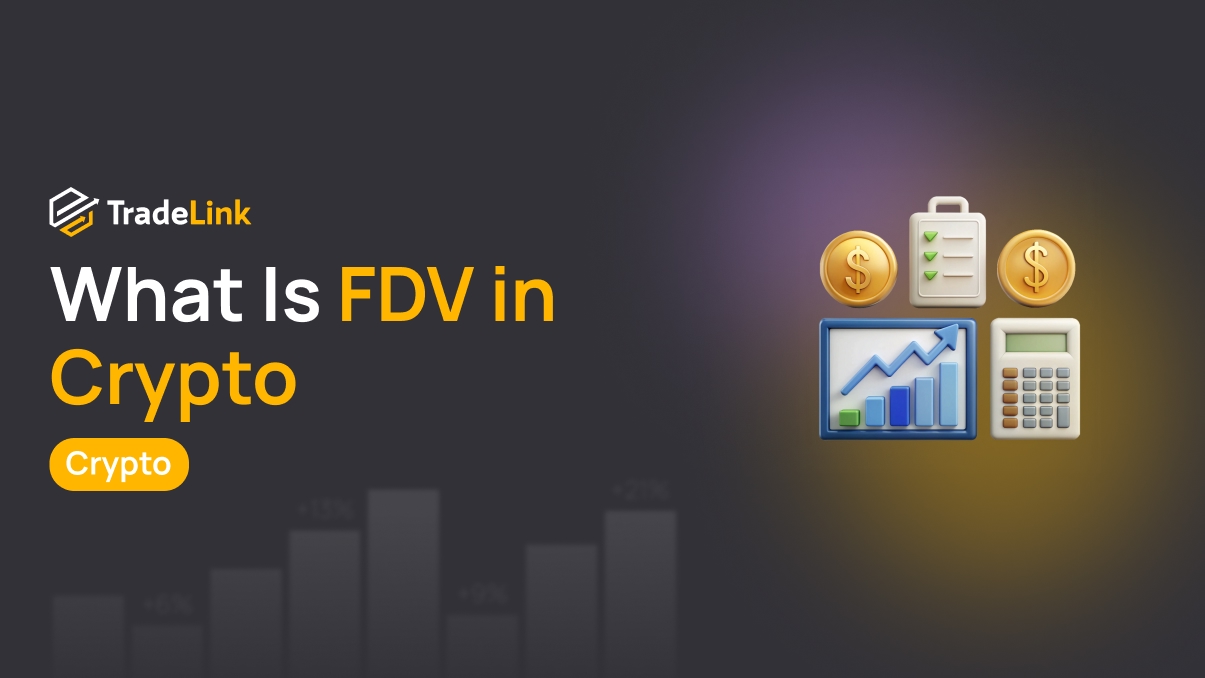
Contents
- Introduction
- Definition of Fully Diluted Valuation
- How Fully Diluted Valuation is Calculated
- Difference Between FDV and Market Capitalisation
- The Role of FDV in Analysing Crypto Projects
- Impact of Tokenomics and Vesting Schedules on FDV
- Risks Associated with High FDV
- When FDV is Useful and When It’s Not
- FDV Compared to Other Metrics
- Conclusion
Introduction
Fully Diluted Valuation (FDV) is a crucial metric for evaluating cryptocurrency projects. It allows investors to assess the potential value of a project when all tokens are issued. This article explains what FDV is, how to calculate it, how it differs from market capitalisation, the impact of tokenomics, and the risks associated with its use.
Definition of Fully Diluted Valuation
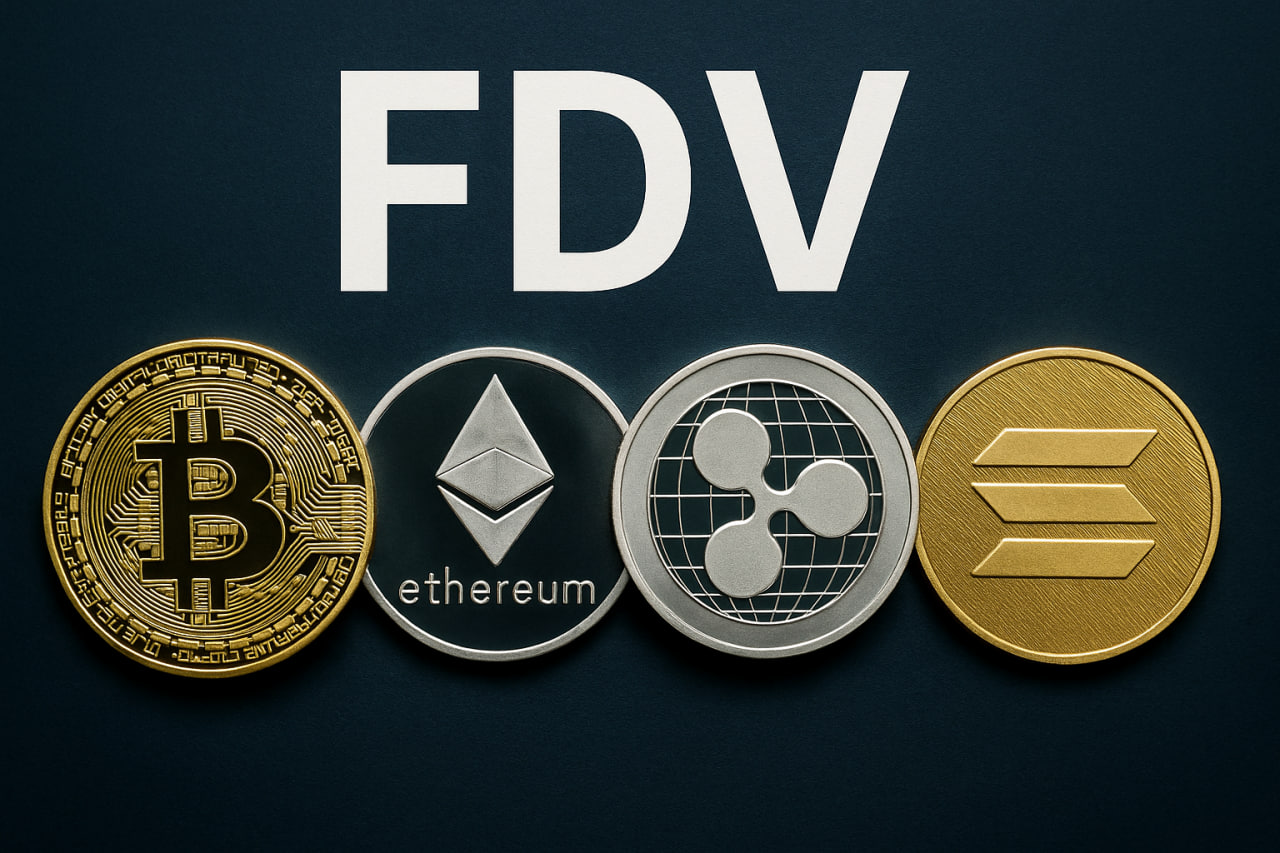
What is FDV
FDV is the theoretical market capitalisation of a cryptocurrency, calculated based on the assumption that all tokens planned for the project (maximum supply, or max supply) are already issued and traded at the current price. FDV accounts for tokens in circulation (circulating supply) as well as those yet to be released, such as those reserved for the team, investors, or future issuance stages.
Difference Between Max Supply and Circulating Supply
- Max Supply: The total number of tokens that will ever exist, including those not yet released. For example, Bitcoin’s max supply is 21 million coins, with approximately 19.8 million in circulation as of July 2025, and the rest will be issued through mining until 2140.
- Circulating Supply: The number of tokens currently traded on the market.
How Fully Diluted Valuation is Calculated
Calculation Formula
FDV is calculated using the formula:
FDV = Maximum Token Supply (Max Supply) × Current Market Price of the Token
Example for Bitcoin:
As of July 2025, the price of one BTC is approximately $100,000, and the max supply is 21 million coins. Thus, FDV = 21,000,000 × $100,000 = $2.1 trillion. This shows the potential capitalisation if all tokens are issued.
Difference Between FDV and Market Capitalisation
Market capitalisation (market cap) is the current value of all tokens in circulation multiplied by their market price. For example, if a project has 10 million tokens in circulation and each token costs $5, the market cap = 10,000,000 × $5 = $50 million.
FDV differs by accounting for all possible tokens (max supply), not just those in circulation, making it a forward-looking metric. For example, for Solana (SOL) in July 2025:
- Price: $150
- Circulating supply: 537 million tokens → Market cap = 537,000,000 × $150 = $80 billion
- Max supply: 605 million tokens → FDV = 605,000,000 × $150 = $91 billion
The $11 billion difference indicates that most tokens are already in circulation, and future issuance will have a limited impact on price.
The Role of FDV in Analysing Crypto Projects
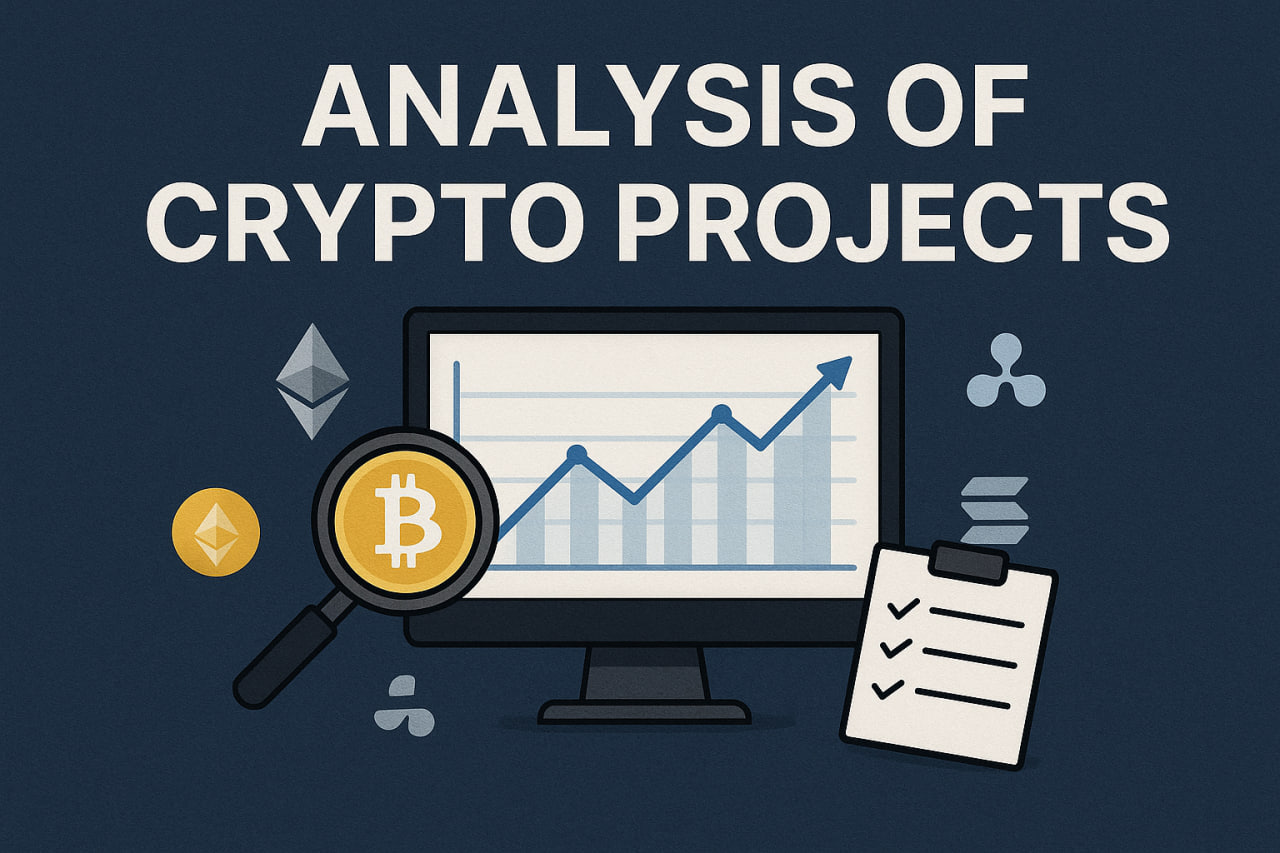
Assessing Growth Potential
FDV helps investors understand how future token issuance might affect price. A low FDV combined with strong fundamentals, such as increasing transaction volume, active users, or developer activity, may indicate an undervalued project. For example, if a DeFi protocol has a low FDV but its Total Value Locked (TVL, the sum of assets locked in smart contracts) is growing faster than competitors, it could signal strong potential.
Comparing Projects
FDV is useful for comparing projects within the same sector. For instance, when evaluating Layer 1 blockchains like Solana and Avalanche, FDV and market cap can reveal which project has a more balanced tokenomics structure.
Impact of Tokenomics and Vesting Schedules on FDV
What is Tokenomics
Tokenomics refers to the structure of token distribution and issuance in a project. It includes:
- The share of tokens allocated to initial offerings (ICO or IDO).
- Tokens are reserved for the team, investors, or ecosystem.
- The vesting schedule determines when reserved tokens enter the market.
For example, if 50% of tokens are reserved for the team with a 1-year vesting period, this could lead to a rapid increase in circulating supply, creating downward pressure on the price.
Connection to Vesting Periods
The vesting period is the time during which reserved tokens are gradually released. A short vesting period (less than 1 year) increases the risk of price declines due to a rapid increase in supply. A long vesting period (2–4 years) reduces short-term risks as tokens enter the market gradually.
Tokenomics Example:
Suppose a DeFi project has a max supply of 16 million tokens, with 20% reserved for the team and a 3-year vesting period. This reduces the risk of a sharp increase in circulating supply, making FDV more predictable.
Impact of Pre-mined Tokens
A high percentage of pre-mined tokens (issued before public sale) may indicate centralisation, where the team or early investors control a large share of tokens. This increases the risk of a dump—a mass sale of tokens that lowers the price.
| Tokenomics Element | Impact on FDV |
|---|---|
| Short vesting period (<1 year) | Increases price pressure |
| Long vesting period (2–4 years) | Reduces short-term risks |
| High % of pre-mined tokens (>50%) | Risk of centralisation and dumps |
Risks Associated with High FDV
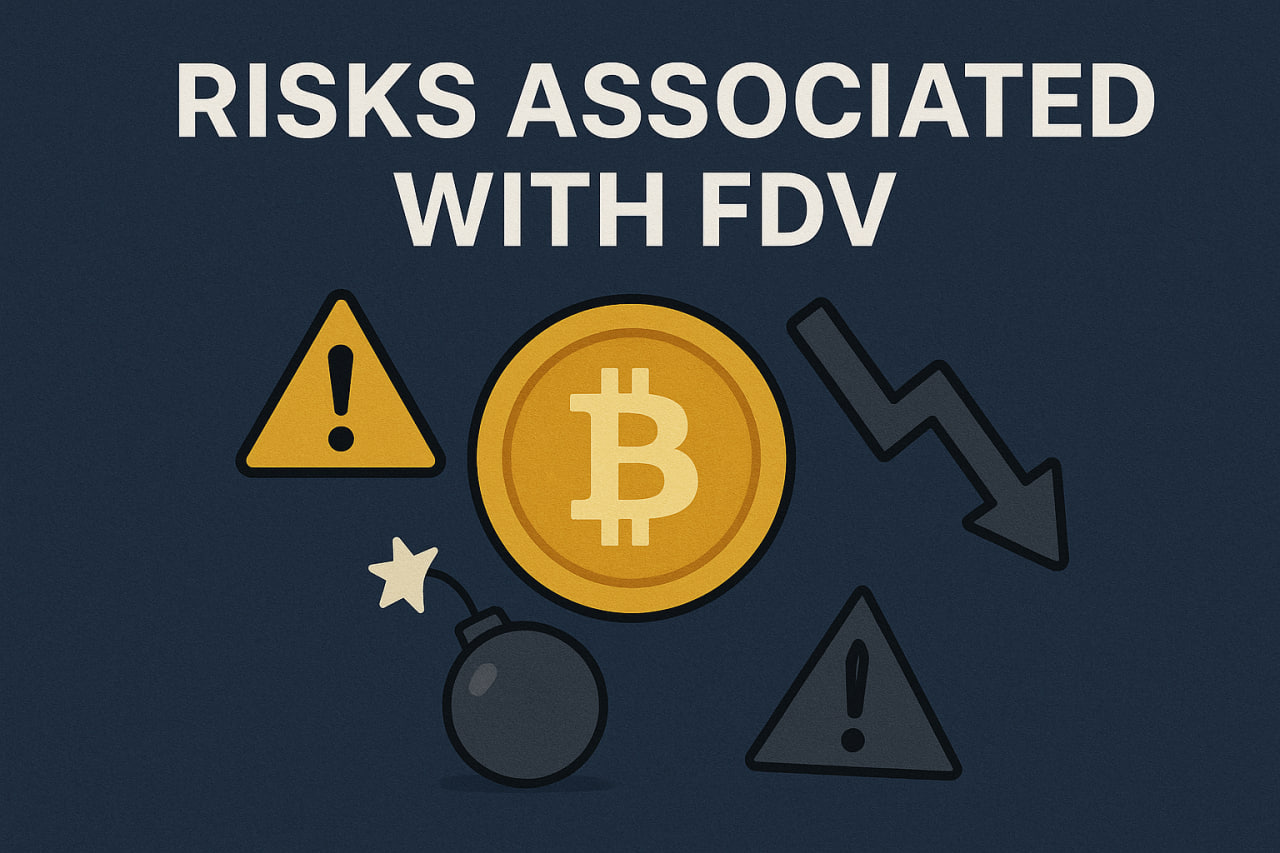
- Price Pressure: A high FDV indicates a large number of tokens not yet in circulation. When these tokens hit the market, supply may exceed demand, reducing the price.
- Risk of Dumps: Projects with a high share of pre-mined tokens held by insiders may face mass selling, especially with short vesting periods.
- Low Liquidity: If a token trades on exchanges with low volume, the price may be susceptible to manipulations like pump-and-dump schemes, making FDV unreliable.
When FDV is Useful and When It’s Not
Scenarios Where FDV is Useful:
- Comparing Projects: FDV helps compare projects in the same sector, considering their long-term potential.
- Analysing Tokenomics: FDV reveals risks tied to future issuance.
- Growth Forecasting: A low FDV with strong fundamentals may indicate growth potential.
Scenarios Where FDV Can Be Misleading
- Early Stages: A high FDV may not reflect a project’s true value, as the current price may be inflated due to a limited circulating supply. For example, a project with only 10% of its max supply in circulation may have an artificially high price.
- Emission Manipulation: Some projects underreport circulating supply to make FDV appear more attractive, hiding risks of rapid supply growth.
FDV Compared to Other Metrics
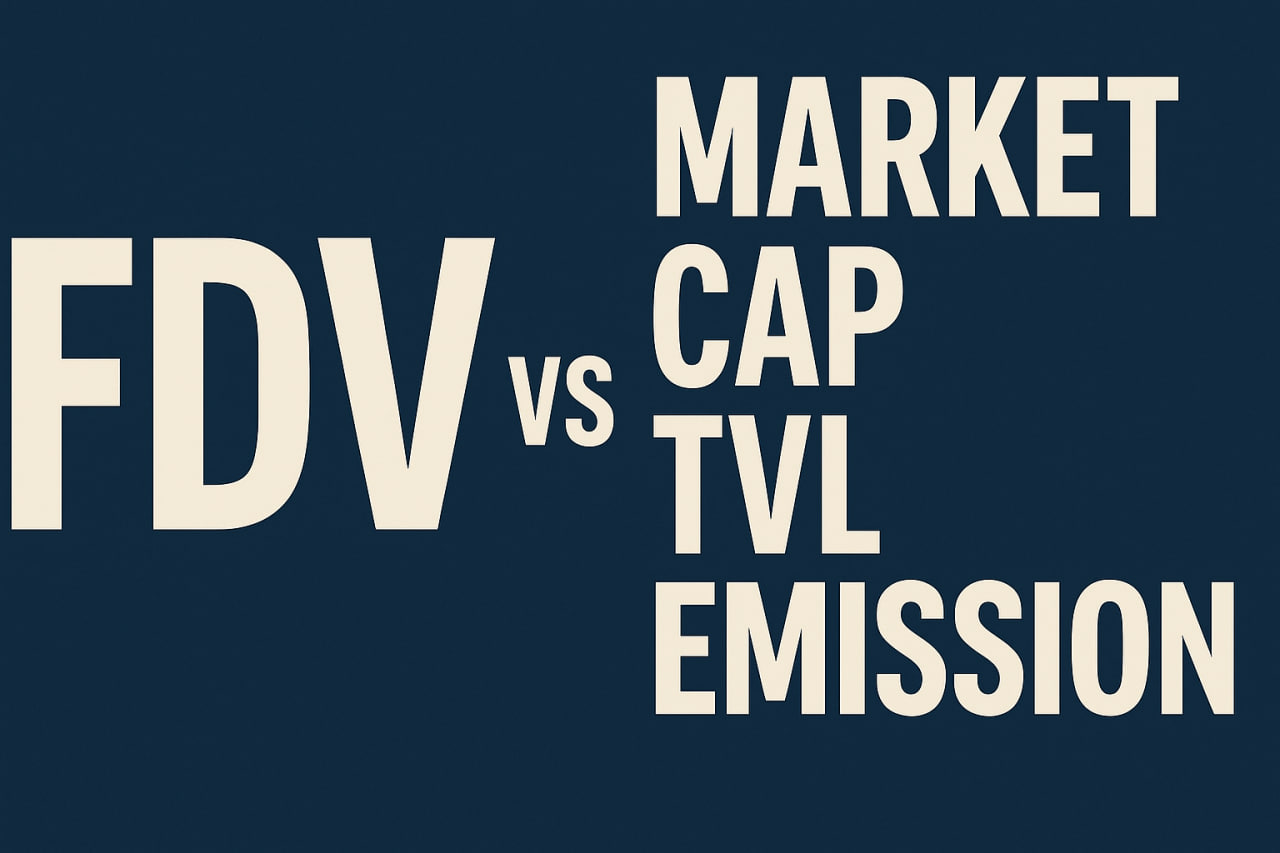
For a comprehensive analysis, FDV should be used alongside other metrics:
| Metric | Description | Role in Analysis |
|---|---|---|
| Market Cap | Value of tokens in circulation | Shows current market value |
| TVL (Total Value Locked) | Sum of assets locked in smart contracts | Assesses activity in DeFi projects |
| Emission Rate | Rate of new token issuance | Indicates the inflation level |
Analysis Example:
As of July 2025, the DeFi protocol Curve has an FDV of $2.2 billion and a TVL of $2.5 billion. A high TVL relative to FDV suggests active protocol usage, which may justify its valuation.
Conclusion
FDV is a valuable tool for evaluating cryptocurrency projects, but it must be analysed in the context of tokenomics, vesting schedules, and other metrics like TVL and emission rate. To use FDV effectively:
- Compare FDV with market cap and TVL to assess a project’s balance.
- Examine vesting periods and the share of pre-mined tokens to identify dump risks.
- Use FDV to compare projects within the same sector, while considering fundamentals like network activity and user growth.
Understanding FDV helps avoid illusions of overvaluation and identify promising projects, but it requires careful analysis of all factors.